The best radiator covers – modern, rustic and affordable options to disguise your heating in style
We've rounded up the very best options for keeping an unsightly radiator out of sight

If you’re looking for the best radiator covers for your house, there’s a high chance that you’re ready to switch up your home decor. And we don’t blame you.
While we know that radiators serve a practical purpose, there’s no doubt that they’re an eyesore which is where radiator cover ideas come in. Radiator covers are the perfect way to show off your design flair, and these products have come leaps and bounds over the past few years. From radiator covers with drawers to cheap radiator covers that don’t scrimp on style.
Of course, we have to point out that most radiator covers will stop your radiators from heating up your home as efficiently. The best radiator covers to help minimise this is one will be ones with enough room at the top to allow the heat to circulate and have plenty of ventilation in the front panel.
However, we know that some radiators are such an eyesore, that sometimes a radiator cover is the best budget living room update or hallway transformation you can do and the efficiency risk is worth taking. So grab your tape measure as we have worked hard to collect the best radiator covers on the market today. And these are our favourites.
The best radiator covers
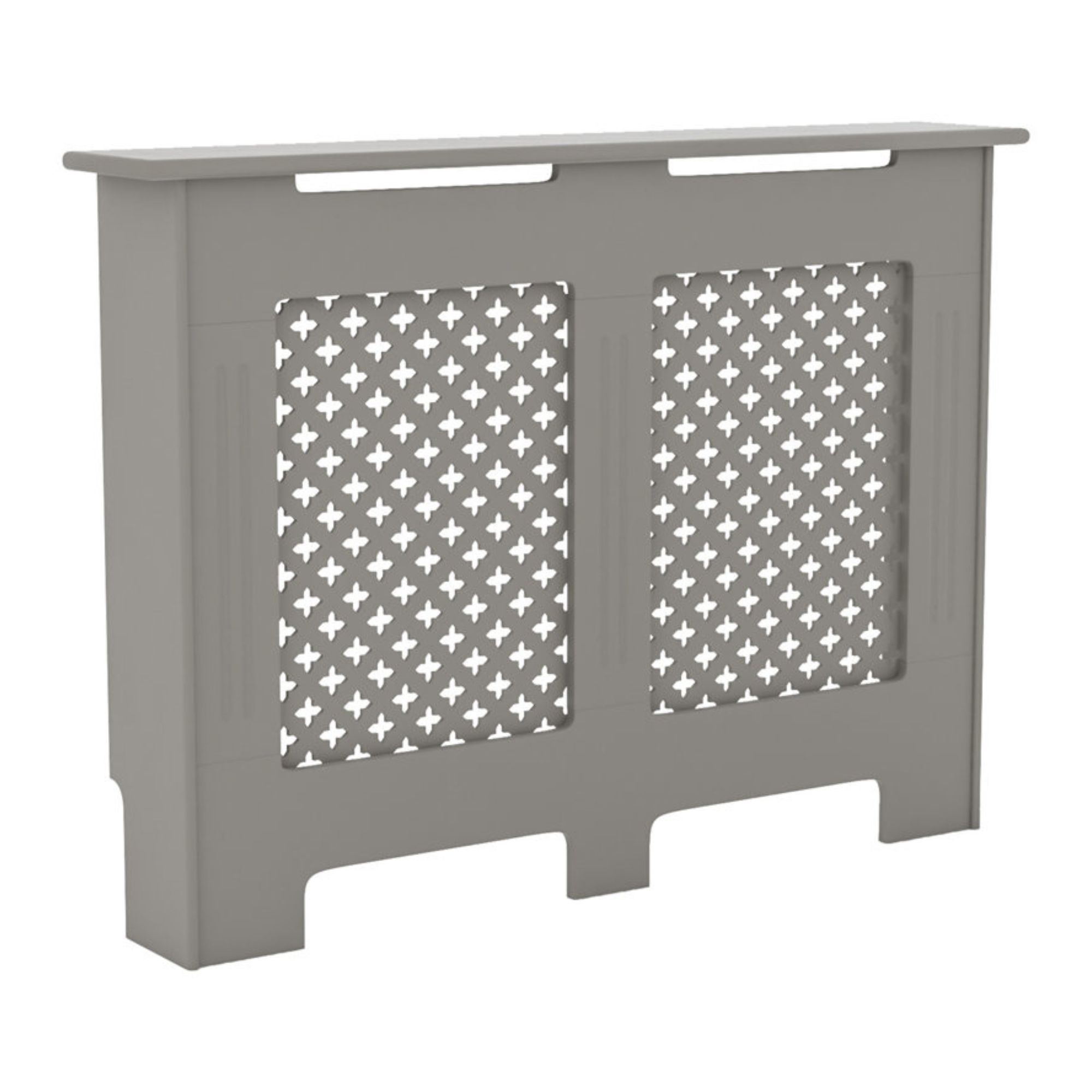
Size options: 4
Colour options: Grey, White, Unfinished
For a cheap radiator cover to suit all sizes and colour schemes, the Reta ticks all of the boxes. Made from sturdy MDF with a powder-coated finish, this design looks sleek while still offering the durability you require. Over 3,000 customers have rated this 4.6 stars out of 5, with many celebrating the style and ease of assembly. Before buying, make sure to check out the latest Wayfair discount codes in case you can pick it up for even less.
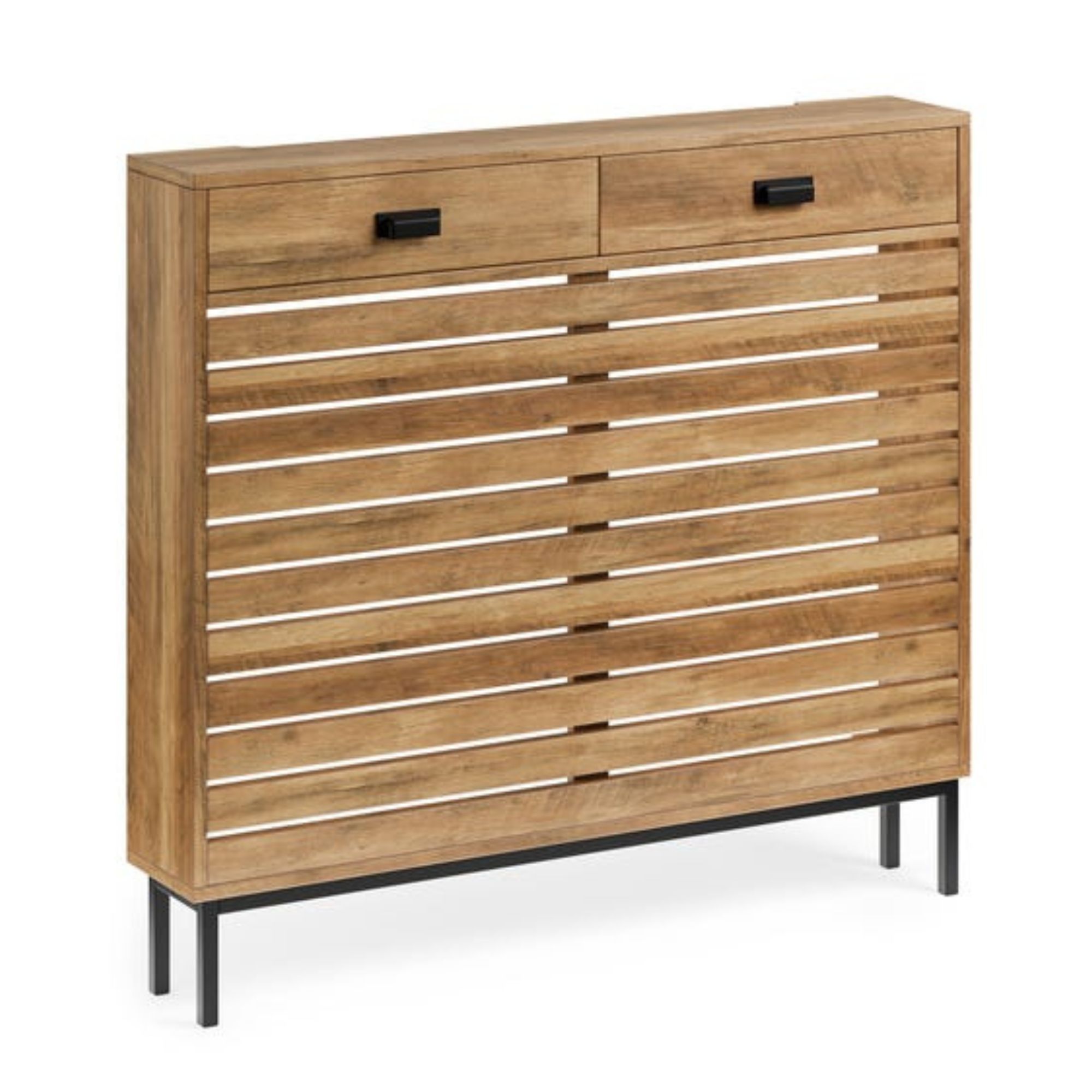
Size options: 1
Colour options: Pine
Do you want a radiator cover that doesn’t look like a radiator cover? Well, look no further. This radiator has been designed with style and practicality in mind, offering a rustic look while also providing two small storage drawers for your keys, candles, or general knick-knacks. The slatted pine effect front is particularly unusual and something that would make a real statement in your home.
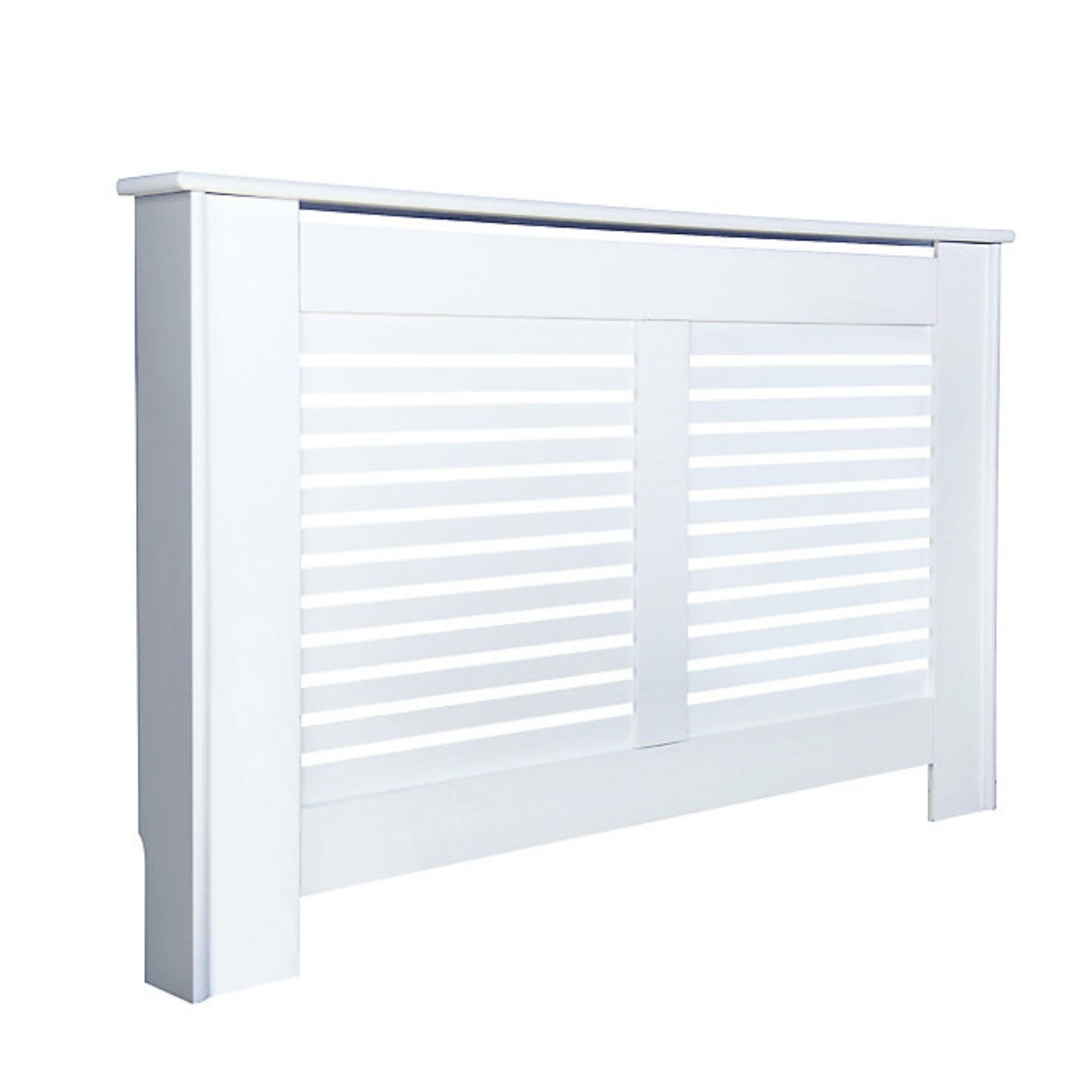
Size options: 3
Colour options: White
Coming in three size options to suit all of the radiators in your home, this white radiator cover may be plain and simple, but it’s far from boring. Instead, it is sleek and sophisticated and perfect for those who want the beauty of a radiator cover without it overpowering a room. Plus, the top of this radiator cover will serve as an ideal shelf for those who want to show off picture frames or potted plants.

Size options: 4
Colour options: White, Grey
Although we love this radiator cover in grey, you can also buy it in white if you prefer starker neutrals. But while the vertical stripes add depth and dimension to the radiator cover itself, there’s no doubt that these stripes will also help to make your room look bigger. Thankfully, it’s pretty easy to attach to the wall, too. This radiator cover comes with clips as standard, which means that you can clip it on and off the wall in seconds.
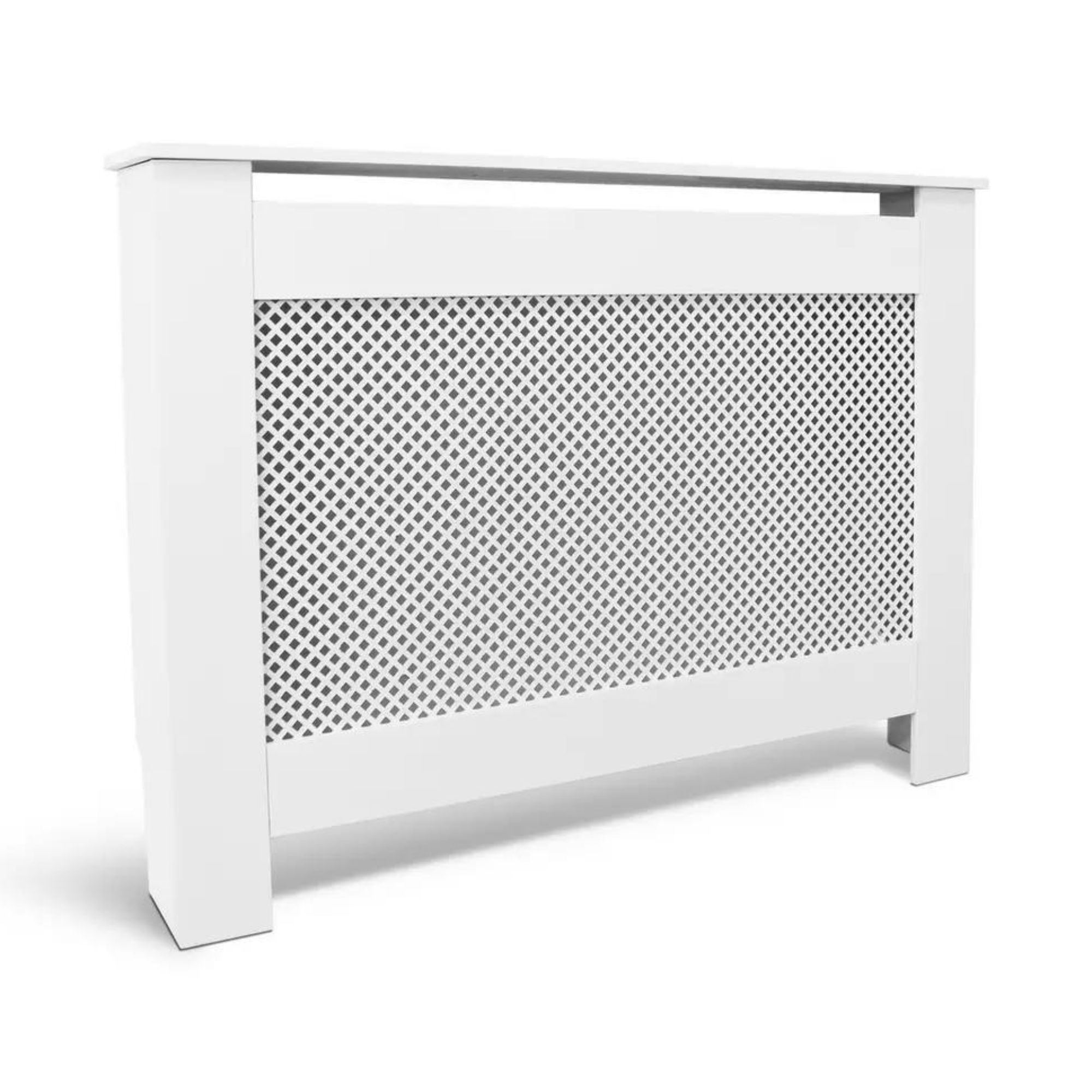
Size options: 3
Colour options: White
If you want to add a period touch to your house decor, this cheap radiator from Habitat should definitely fit the bill. The lattice design allows you to introduce a beautiful and intricate pattern to your room while still covering up the ugly radiator underneath. But if this small size doesn’t quite work for the room you want to upgrade, you’ll be happy to know that this radiator cover also comes in two larger sizes.

Size options: 3
Colour options: White and Grey
The Arlington radiator cover may be a bargain, but it certainly doesn’t look low-budget. It looks stylish and attractive and will be perfect for those looking to add a country cottage vibe to their home. And although the bulk of the white radiator cover is crisp and clean, the natural wood shelf on top balances it out perfectly while also offering practical storage space for your personal items.
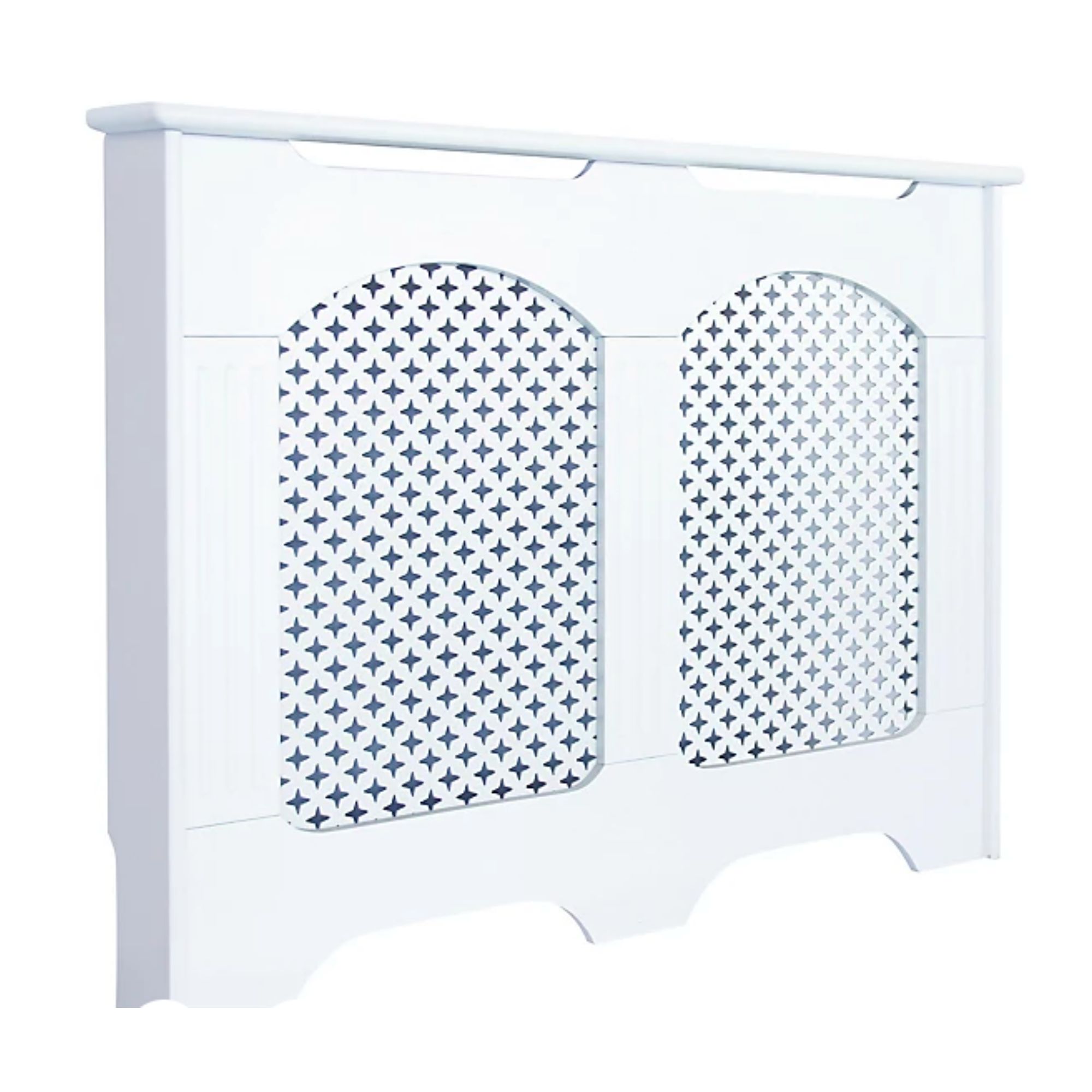
Size options: 3
Colour options: White
B&Q has over 156 radiator covers, but the Cambridge style is one of its most popular. Happy customers have given this radiator cover a 4.5 rating, with many raving about the ease of assembly and the fact that it makes a real statement in your room. After all, the mixture of curved sections and the diamond-shaped cutouts are incredibly striking and great for those who are looking for a more traditional radiator cover.
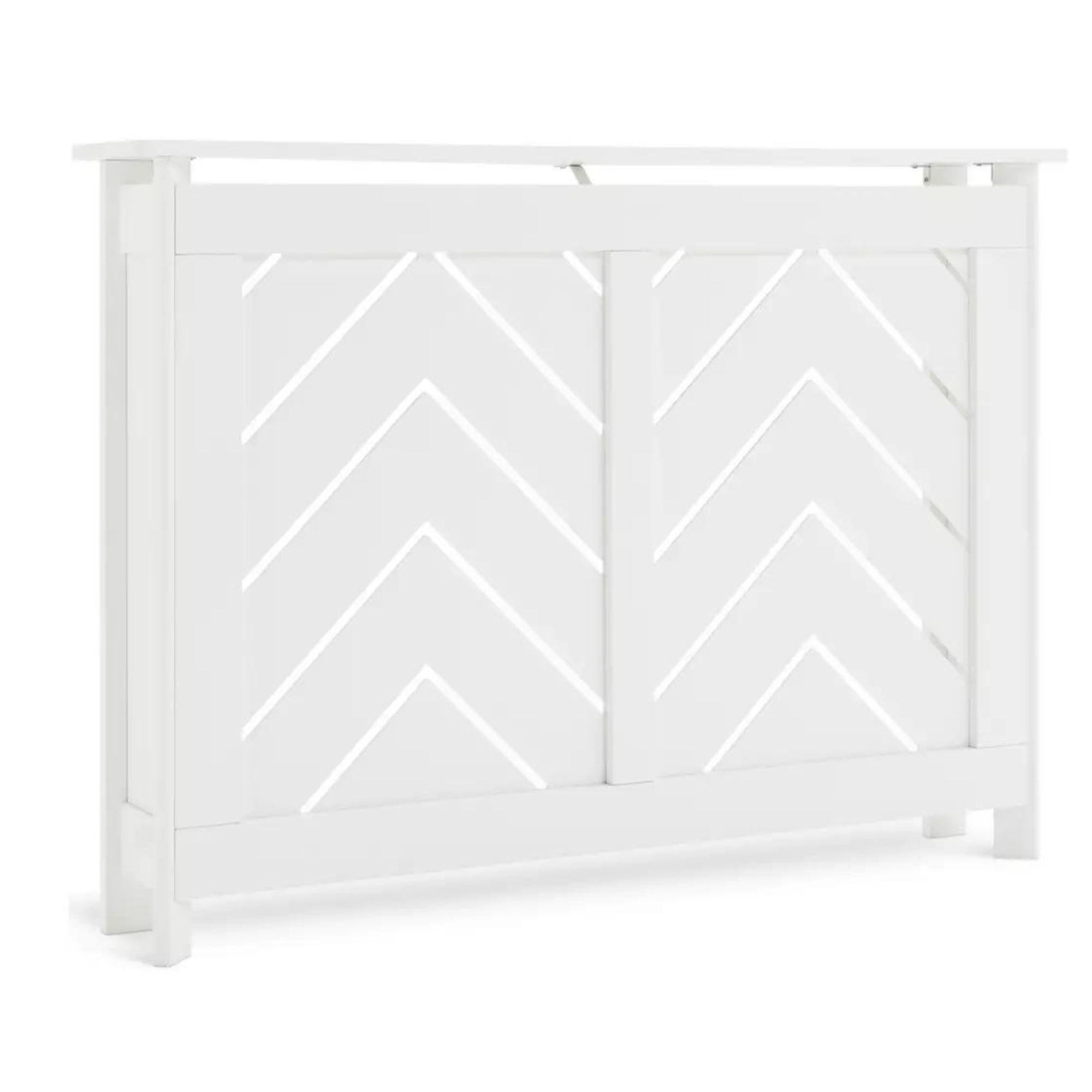
Size options: 3
Colour options: White
This modern radiator cover with a chevron-style design is unlike anything we’ve ever seen, and we predict that these vibrant and unique radiator covers are going to be the next big thing in home decor. Not only does this cover stand out from the crowd, but it should also do the job perfectly - as it still offers the slithers of open space to radiate the heat out into your home. All in all, this is one of our favourites.
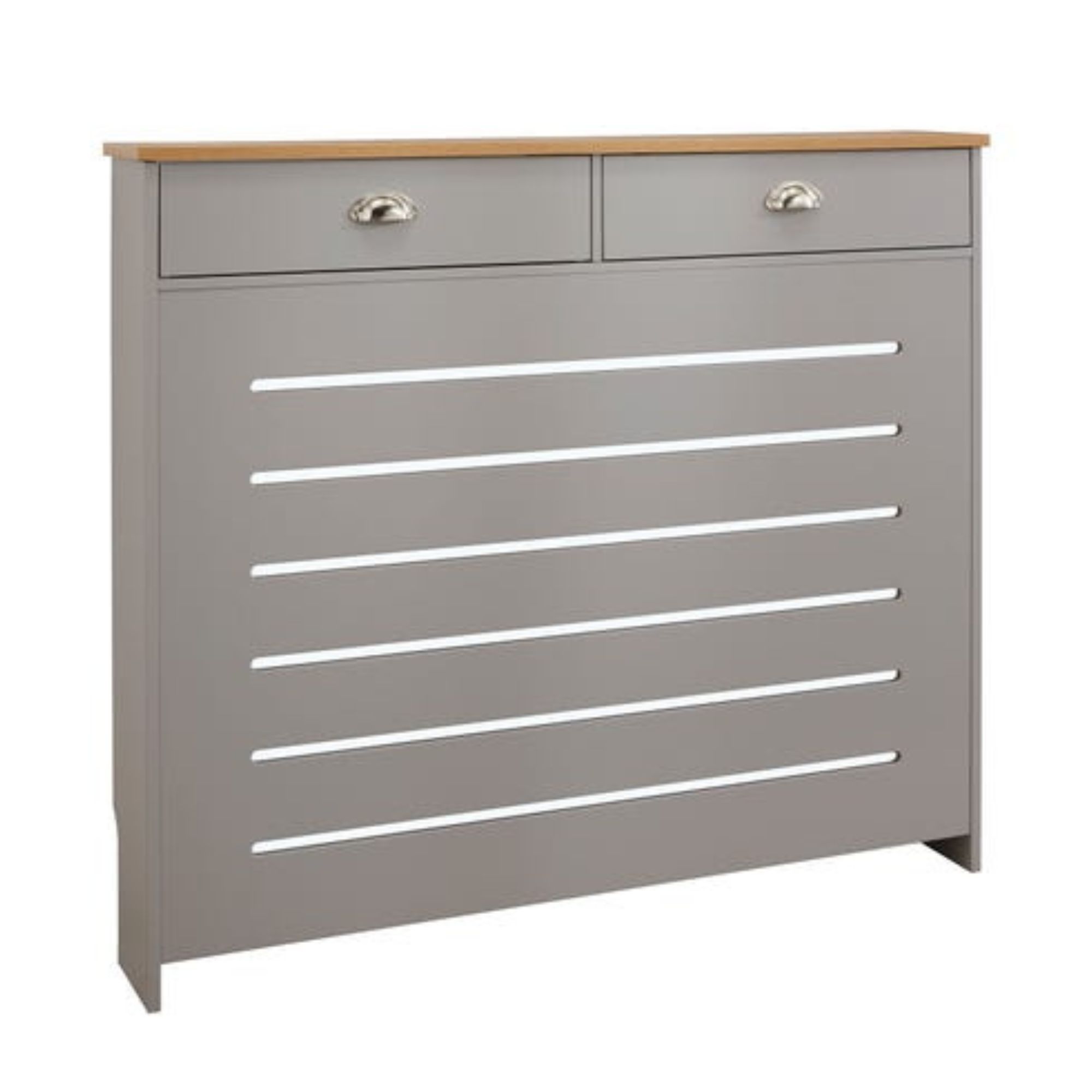
Size options: 3
Colour options: Grey, Cream, Black
Here’s another radiator cover with drawers, and this time, the drawers are incredibly deep, making them perfect for storing photo albums, books, or all of the DVDs you no longer watch but can’t bear to part with. Coming in three different sizes and three different colours, you can choose the perfect option for your room. The half-moon-shaped handles are also a major design plus point.
How to choose the best radiator cover for your home

Radiator covers are usually fronted with a mesh of latticework. This allows the heat radiated to circulate effectively. The design you choose should complement the existing period and architectural details of the room for a cohesive look. After all, you don't want your covers to stand out for all the wrong reasons.
There are three main types of radiator covers to choose from, covering all budgets:
Bespoke radiator covers: For a bespoke model with your own grille pattern, colour and finish, source a local carpenter or cabinet maker. They are likely to use a laser-cutting technique – this allows you to choose your own design, whether it's geometric, ornate or something utterly unique, like a bird theme. This can be extremely expensive, though, and you can expect to pay around £400 for a bespoke radiator cover.
Made-to-measure radiator covers: For this option, you can choose a design, which will then be built from scratch to accommodate your specific radiator. It's the way to go if you want something of a reasonable standard, looks-wise, but don't necessarily have a standard-sized radiator or space.
Off-the-peg radiator covers: If you’re looking for a cheap radiator cover, the most affordable option is to buy ready-made covers from the likes of Argos or B&Q – such as the ones we have listed above. As well as disguising a less-than-beautiful radiator, they also double up as useful shelving where you can display decorations or keep your keys or post to hand. They usually come in a choice of standard sizes, which will match up to newer panels.
How to measure for a radiator cover
First, measure the length of your radiator. Don't just measure the panel – measure to the outside edge of any pipes and valves, and then add two cms on each side for clearance.
Next measure the height from the floor to the top of the panel, again then adding 25mms to allow for air circulation. Lastly, measure the depth from the front of your radiator to the wall behind and again add 25mm.
How to fit a radiator cover

Unpack the radiator cabinet (assuming it's a flat-packed design) and lay out the pieces on the floor so you see what you're working with. Follow the manufacturer's assembly instructions, using a drill driver to put it together.
The cabinet can be left freestanding but it's much safer to fix it to the wall with the brackets provided. In fact, it's a must if you have children. Before you screw the brackets into the wall, use a detector to check for any wires or pipes.
If you're painting the cabinet, it's easier to do this before fixing it properly to the wall. Use a small paintbrush to make sure you get into every nook and cranny of the cut-out fretwork and edges.
FAQs
What is the most efficient radiator cover?
As radiator covers come in many designs and materials, it can be hard to know which one is best. But when it comes to efficiency, it’s widely accepted that metal is the most efficient radiator cover in terms of heat loss. However, these can also be incredibly dangerous, as they conduct the heat and can be incredibly hot to touch.
That’s why the most common type of radiator you can buy is a wooden radiator cover. While this material isn’t the best conductor, it’s considered to be the best in terms of safety and aesthetics.
It’s important to understand that you cannot use a radiator cover if you have a storage heater, however. Their high heat output makes them a fire hazard.
What are the disadvantages of radiator covers?
While radiator covers certainly have a lot of advantages in the home, they also have some disadvantages you need to consider before buying the best radiator cover.
Heat loss: As long as your radiator cabinet is the right size and positioned correctly, the heat loss experienced should be less than 10%. However, this is still 10% you might not want to lose with energy bills rising.
They cost money: Although there are so many cheap radiator covers out there, they still cost money. And as they’re not an essential item in the home, some may find the cost of them to be unnecessary and a major disadvantage.
Durability: Most radiator covers are made from wood, which is a fairly durable material. But it’s not invincible, and wood radiator covers can easily be broken or damaged over the years. This is something to consider before shelling out your hard-earned money.

Are there any others ways to disguise a radiator?
A quick, low-cost way to disguise an ugly radiator is to paint it in the same colour as the wall behind it. Make sure your radiator is clean before you start, so that you get a smooth finish – our guide to how to clean a radiator can help with this.
Use a metal primer first, then cover with solvent-based paint. Once it has been painted, allow it to fully dry before you turn the radiator back on. Wilko sells a selection of specialist radiator paints.
Sign up to our newsletter for style inspiration, real homes, project and garden advice and shopping know-how

Lauren Bradbury has been the Content Editor for the House Manual section since January 2025 but worked with the team as a freelancer for a year and a half before that. She graduated with a Bachelor’s degree in English and Creative Writing from the University of Chichester in 2016. Then, she dipped her toe into the world of content writing, primarily focusing on home content. After years of agency work, she decided to take the plunge and become a full-time freelancer for online publications, including Real Homes and Ideal Home, before taking on this permanent role. Now, she spends her days searching for the best decluttering and cleaning hacks and creating handy how-to guides for homeowners and renters alike, as well as testing vacuums as part of her role as the Ideal Home Certified Expert in Training on Vacuums, having spent over 110 hours testing different vacuum models to date!